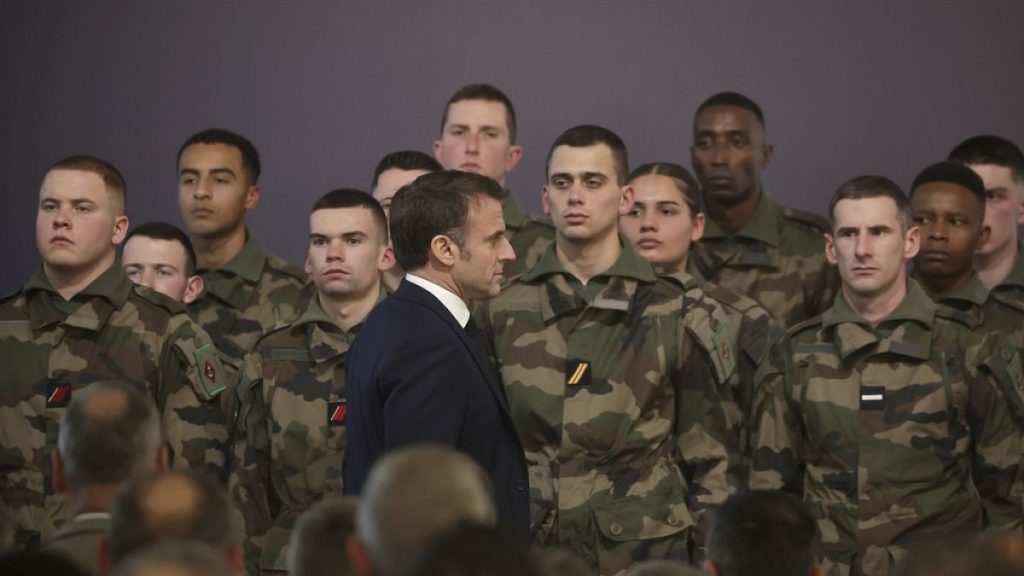As the European Union confronts escalating security challenges, the capabilities of France to spearhead a joint defense initiative have come under scrutiny. French President Emmanuel Macron’s push for increased military spending and resource pooling among EU member states signifies a pivotal moment in European defense strategy amid a reduced American military presence. However, experts express concerns regarding whether France possesses the necessary military resources and infrastructure to fulfill this leadership role.
| Article Subheadings |
|---|
| 1) France’s Defense Spending Initiatives |
| 2) The Paradox of Arms Exports |
| 3) Critical Gaps in Military Capability |
| 4) EU Cooperation and Integration Efforts |
| 5) Future of France’s Defense Strategy |
France’s Defense Spending Initiatives
Following his election in 2017, President Emmanuel Macron significantly raised France’s defense expenditure, aiming to reposition the nation as a central player in European security. The Military Programming Act for 2019-2025 allocated a substantial €295 billion, while the updated 2024-2030 plan saw that figure climb to €413 billion—reflecting a notable 40% increase. Despite these increased allocations, questions remain regarding whether this spending is truly sufficient to address the dynamic and potentially dire security landscape, especially following Russia’s full-scale invasion of Ukraine in 2022. Such incidents highlight the urgent need for robust military preparedness, with defense officials like Senator Cédric Perrin emphasizing that while improvements are evident, funding still falls short in meeting the new challenges posed by adversarial states.
The Paradox of Arms Exports
France holds a prominent position as the second-largest arms exporter globally, as indicated by analyses from entities like the Stockholm International Peace Research Institute. However, this status comes into conflict with the internal struggles of the French military. Experts argue that the complexity of France’s arms exports does not correlate directly with the military’s capabilities. Emmanuel Dupuy, a noted military analyst, highlights a critical flaw in the military supply chain, stating that while French arms sales, such as the Rafale jets and Caesar cannons, thrive, the country remains hindered by a shortage of ammunition. This dissonance raises alarms about France’s self-sufficiency when global tensions necessitate immediate military readiness.
Critical Gaps in Military Capability
Experts note that despite France’s advanced military hardware—comprising approximately 200,000 active soldiers, 44,000 reservists, advanced tanks, and nuclear capabilities—there are significant gaps in vital military infrastructure. For example, there is a pressing need to enhance force projection abilities, particularly through the acquisition of heavy transport aircraft capable of moving troops and armored vehicles swiftly. Furthermore, the importance of modernization through drones cannot be overstated, especially relevant in contemporary conflict scenarios seen in Ukraine. Surveillance and real-time response capabilities must be improved to navigate the complexities of cyber warfare and electronic threats. Analysts suggest that the reliance on US-built systems should transition to developing European alternatives for critical defense technologies.
EU Cooperation and Integration Efforts
Traditionally, France’s military doctrine has leaned towards expeditionary warfare, focusing on operations rather than large-scale direct confrontations. However, experts assert that this approach produces a fragmented force, limiting France’s ability to engage effectively in substantial conflicts without coalition support from NATO or other EU allies. The necessity for improved interoperability in Europe’s weapons industry and procurement strategies remains pivotal. There is a consensus on the need for fewer, but more effective types of equipment across Europe, advocating for joint efforts that could foster shared defense projects, such as collaborative aircraft development, rather than competing national initiatives.
Future of France’s Defense Strategy
In light of the challenges faced in enhancing France’s defense capabilities, optimism among military officials persists. Recent proposals aim to garner an additional €5 billion in both public and private funding for defense initiatives. As part of a broader strategy to elevate defense budgets from 2% to potentially 3.5% of the national GDP, Macron’s administration understands that the upcoming years will be crucial for establishing a resilient military framework. As the situation in Europe evolves, France’s commitment to strengthening its military presence and capabilities will significantly impact not only its national security but also that of the entire region.
| No. | Key Points |
|---|---|
| 1 | France has significantly increased its defense spending, with plans exceeding €413 billion over the next few years. |
| 2 | As the second-largest arms exporter, France faces criticism for its military supply chain flaws despite selling high-quality equipment. |
| 3 | Experts indicate critical gaps, particularly in force projection capabilities, surveillance, and reliance on US military technology. |
| 4 | Cooperation among EU nations on military capabilities remains a work in progress, with calls for improved interoperability and joint projects. |
| 5 | France aims to boost overall defense spending while managing financial constraints affecting public funding options. |
Summary
The ongoing evaluation of France’s military capabilities illustrates the complexities of European defense in a changing geopolitical landscape. While significant investments signal a commitment to enhanced military readiness, the challenges of production capacity, resource allocation, and internal cohesion underline the need for strategic reform. As France aims to position itself as a leader in EU defense initiatives, addressing these critical gaps will be essential for bolstering national and regional security in the face of evolving threats.
Frequently Asked Questions
Question: What is the current state of France’s military spending?
France is currently investing heavily in its military, with plans to allocate over €413 billion from 2024 to 2030 to enhance its defense capabilities, following an earlier commitment of €295 billion from 2019 to 2025.
Question: Why is there concern about France’s ammunition stockpiles?
Concerns arise due to extremely low ammunition stockpiles, which are reported to be insufficient for sustained military engagement, especially in light of the Ukrainian army’s high consumption rates during conflict.
Question: How does France’s arms export status affect its military capabilities?
While France is the second-largest arms exporter globally, experts argue that this does not equate to strong internal military capabilities due to issues such as supply chain flaws and reliance on imports for essential materials like ammunition.


